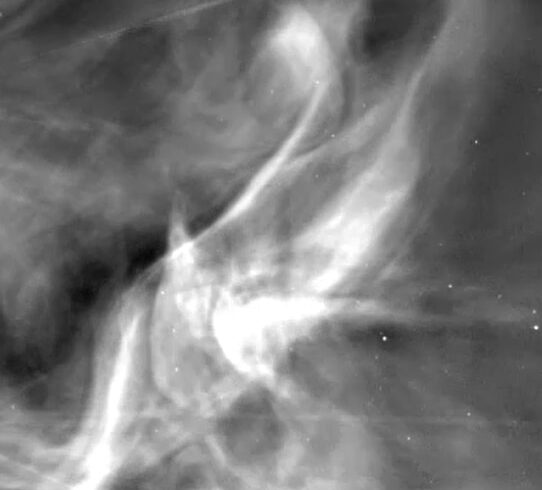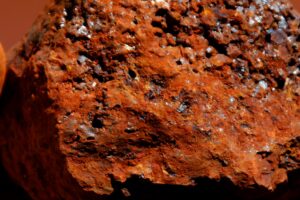
The US space agency has revealed images taken from the closest-ever distance from the Sun, showing massive plumes of solar material spewing out into space.
They were taken last December, when the US National Aeronautics and Space Administration’s (NASA) Parker Solar Probe made its closest approach to the Sun.
The probe passed by within 6.2 million kilometres of the Sun — the first time it had got so close to the solar star.
And while it has since made two more close approaches to the Sun, we’re only now seeing the incredibly detailed imagery from that first trip now.
“The amount of clarity and the amount of details that we got from Parker Solar Probe is totally unprecedented,” Parker Solar Probe project scientist Nour Rawafi said.
“But also we see phenomena that you didn’t really see before and that’s where the fun begins.”
What do the images show?
What you’re looking at is solar wind spewing out from the solar atmosphere — called the corona — and onwards into our solar system.
The imagery shows a stream of electrically charged particles spewing out from the Sun in huge bursts.
Scientists call these coronal mass ejections (CMEs).
The images were taken at 6.2 million kilometres from the Sun in December. (NASA)
And the images from the Parker Probe show us those events in high definition for the first time.
The imagery was captured with the Wide-Field Imager for Solar Probe, which has been nicknamed WISPR.
“We’re seeing the CMEs basically piling up on top of one another,” WISPR instrument scientist Angelos Vourlidas said in a NASA article.
The yellow dotted lines in these images highlight three different CMEs.
The probe captured three separate outbursts of solar material. (NASA)
It also shows something called heliospheric current sheet.
That’s the boundary where the direction of the Sun’s magnetic field switches from north to south.
The area marked within the yellow dotted lines shows the Sun’s heliospheric current sheet. (NASA)
What’s the point of the probe?
While the imagery is spectacular to look at, the whole mission isn’t about capturing cool videos from space.
The idea is that learning more about the Sun will help scientists better prepare us for the impacts of space events have on Earth.
What is space weather?
It’s a term for things that happen outside the Earth’s atmosphere which impact the near-Earth space environment and our technology here on Earth.
And it’s not just something NASA thinks about.
Here in Australia, the Bureau of Meteorolgy has a special department dedicated to it, called the Australian Space Weather Forecasting Centre (ASWFC).
“The primary source of space weather is the Sun, with the greatest disturbances usually caused by solar flares and subsequent geomagnetic storms,” the ASWFC website says.
Space weather events like CMEs can lead to what’s called geomagnetic storms, the phenomena that causes the aurora australis (or the aurora borealis if you’re in the Northern Hemisphere).
The centre monitors and forecasts space weather conditions, which include solar activity, and geophysical and ionospheric conditions.
One function of the ASWFC is putting out geomagnetic storm alerts, which aurora chasers use so they can set themselves up to take stunning photos like this one.
We have geomagnetic storms to thank for aurora australis displays. (Supplied: Luke Tscharke)
if you’re interested, you sign up to the ASWFC alerts via this online portal, you’ll get an email next time an aurora might be brewing.
But space weather is not just about pretty lights.
Severe solar weather can create a whole lot of problems on Earth.
“It offers serious threats to increasingly complex communications and technological systems,” the ASWFC’s website explains.
“Space weather disturbances can interrupt HF radio, damage power grids, threaten satellite transmissions and instruments, including avionics in extreme circumstances, and reduce the life of satellites in low earth orbits.”
NASA probe’s closest-ever approach to Sun
This can translate to things like navigational issues for pilots, hampering communications with emergency services and, in some cases, cause power outages.
“Our ability to observe and monitor solar activity is crucial,” the ASWFC says in a fact sheet.
It points to a CME in July 2012 which impacted a NASA satellite, but thankfully missed Earth.
“A 2013 study estimated that the USA would have suffered between $600 billion and $2.6 trillion in damages, mainly to electrical infrastructure, if this coronal mass ejection had been directed towards the Earth,” the fact sheet said.
How will the Parker Probe data help us?
“We are witnessing where space weather threats to Earth begin, with our eyes, not just with models,” NASA’s Nicky Fox said.
“This new data will help us vastly improve our space weather predictions to ensure the safety of our astronauts and the protection of our technology here on Earth and throughout the solar system.”





